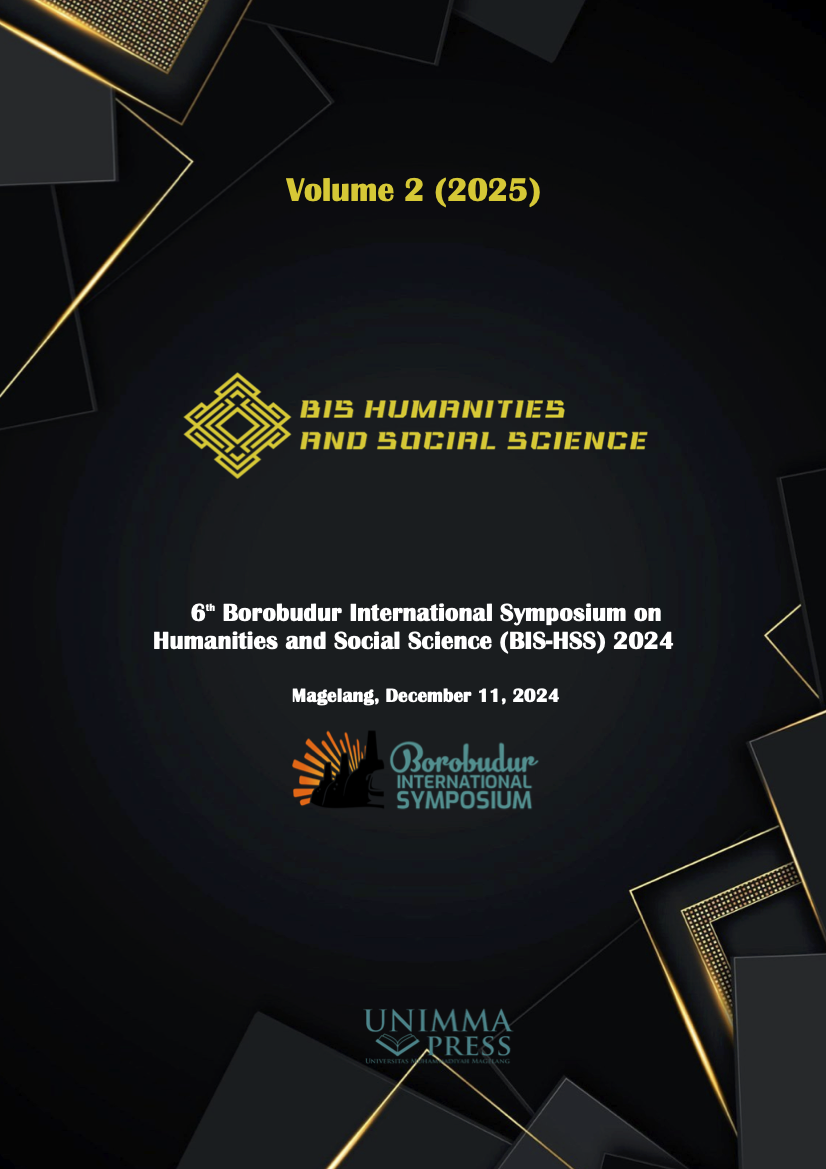Analysis of the implementation of the positive discipline development model in elementary schools
Keywords:
Implementation, Positive discipline, Development, ModelAbstract
The purpose of this study was to: (1) What are teachers' perceptions of the positive discipline development model; (2) When is the time for the positive discipline approach development model to be implemented in elementary schools; and (3) What steps are taken by schools to implement the development of a positive discipline approach model in elementary schools. The approach used in this study is a qualitative approach. The subjects of this study were Elementary School Teachers in Magelang Regency and were selected by purposeful sampling, namely one school in each sub-district. Data collection techniques were interviews. Data analysis was carried out using a coding system with coding based on the selection of criteria for the level of change obtained by interpreting the development of a positive discipline model. The results of this study indicate that the implementation of the positive discipline development model in elementary schools indicates a paradigm shift from a punishment-based approach to an approach that emphasizes self-awareness, personal responsibility, and positive relationships. Teachers play an important role by being role models and adapting methods according to student needs. Initial steps such as socialization, developing class agreements, and getting used to positive values help create active involvement. With the support of policies such as the Independent Curriculum, the implementation of this model is further strengthened, encouraging the formation of student character that is disciplined, has social awareness, and responsibility through positive communication and a supportive educational environment.
References
[1] “Undang Undang Sistem Pendidikan Nasional Tahun 2003”.
[2] Imron & Khadijah Mohd Khambali & Afga Shidiq Rifai & Irham Nugroho, “Development of A Soft Skills-Based Learning Model With A Behavioristic Approach,” Tarbiyatuna J. Pendidik. Islam, vol. 12, no. 2, pp. 108–120, 2021.
[3] A. Y. W. Sutikno and M. Triyono, “Analisis Penerapan Disiplin Positif pada Guru SD Pinggiran dan Terpencil di Kabupaten Sorong,” J. Citiz. Educ., vol. 1, no. 1, pp. 44–55, 2019.
[4] K. Thakur, “Fostering a Positive Environment in Schools Using Positive Discipline,” Indian J. Posit. Psychol., vol. 8, no. 3, pp. 315–319, 2017.
[5] J. H. Souisa, M. A. Purwaningratri, Subagyo, S. Utami, and B. Al-Huda, Disiplin Positif untuk Merdeka Belajar Strategi Penerapan pada Jenjang SMA. Jakarta: Kementerian Pendidikan Riset dan Teknologi, 2022.
[6] Imron, Laporan PMO Sekolah Penggerak Bulan Januari 2024. 2024.
[7] J. D. C. John W. Creswell, Research Design: Qualitative, Quantitative, and Mixed Methods Approaches. New Delhi: SAGE Publications, 2017.
[8] Sugiyono, Metode Penelitian Kuantitatif, Kualitatif dan R&D, 28th ed. Bandung: Alfabeta, 2019.
[9] Creswell J., Penelitian Kualitatif & Desain Riset: Memilih diantara Lima Pendekatan. 3rd ed. Yogyakarta: Pustaka Pelajar, 2020.
[10] B. H. A. Thompson, “Positive Discipline Strategies and Student Outcomes,” Int. J. Behav. Dev., vol. 47, no. 1, 2022.
[11] K. G. Eva Dreikurs Ferguson, “Evaluating the Efficacy of Positive Discipline Parent Education,” J. Individ. Psychol., vol. 79, no. 2, 2023.
[12] P. Carroll, “Effectiveness of Positive Discipline Parenting Program on Parenting Style, and Child Adaptive Behavior,” Child Psychiatry Hum. Dev., vol. 53, no. 6, pp. 1349–1358, 2022, doi: 10.1007/s10578-021-01201-x.
[13] S. Zuković and D. Stojadinović, “Applying positive discipline in school and adolescents’ self-esteem,” Int. J. Cogn. Res. Sci. Eng. Educ., vol. 9, no. 1, pp. 1–11, 2021, doi: 10.23947/2334-8496-2021-9-1-1-11.
[14] M. Hidayati and A. W. B. Suharto, “Penerapan Disiplin Positif Dalam Pembelajaran Jarak Jauh Di Smp Negeri 1 Banyumas,” J. Pendidik. Ilmu Sos., vol. 31, no. 1, pp. 9–22, 2021, doi: 10.23917/jpis.v31i1.13360.
[15] M. R. Braun, P. Walton, S. B. M. Beck, and W. London, “Illustrating the relationship between the coefficient of performance and the coefficient of system performance by means of an R404 supermarket refrigeration system,” Int. J. Refrig., vol. 70, pp. 225–234, 2016, doi: 10.1016/j.ijrefrig.2015.10.020.
[16] Z. Ma, H. Bao, and A. P. Roskilly, “Thermodynamic modelling and parameter determination of ejector for ejection refrigeration systems,” Int. J. Refrig., vol. 75, pp. 117–128, 2017, doi: 10.1016/j.ijrefrig.2016.12.005.
Downloads
Published
Conference Proceedings Volume
Section
License

This work is licensed under a Creative Commons Attribution-NonCommercial 4.0 International License.

